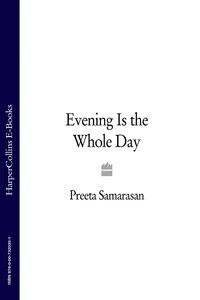September 6, 1980
THERE IS, stretching delicate as a bird’s head from the thin neck of the Kra Isthmus, a land that makes up half of the country called Malaysia. Where it dips its beak into the South China Sea, Singapore hovers like a bubble escaped from its throat. This bird’s head is a springless summerless autumnless winterless land. One day might be a drop wetter or a mite drier than the last, but almost all are hot, damp, bright, bursting with lazy tropical life, conducive to endless tea breaks and mad, jostling, honking rushes through town to get home before the afternoon downpour. These are the most familiar rains, the violent silver ropes that flood the playing fields and force office workers to wade to bus stops in shoes that fill like buckets. Blustering and melodramatic, the afternoon rains cause traffic jams at once terrible—choked with the black smoke of lorries and the screeching brakes of schoolbuses—and beautiful: aglow with winding lines of watery yellow headlights that go on forever, with blue streetlamps reflected in burgeoning puddles, with the fluorescent melancholy of empty roadside stalls. Every day appears to begin with a blaze and end with this deluge, so that past and present and future run together in an infinite, steaming river.
In truth, though, there are days that do not blaze and rains less fierce. Under a certain kind of mild morning drizzle the very earth breathes slow and deep. Mist rises from the dark treetops on the limestone hills outside Ipoh town. Grey mist, glowing green hills: on such mornings it is obvious how sharply parts of this land must have reminded the old British rulers of their faraway country.
To the north of Ipoh, clinging to the outermost hem of the town’s not-so-voluminous outskirts, is Kingfisher Lane, a long, narrow line from the “main” road (one corner shop, one bus stop, occasional lorries) to the limestone hills (ancient, inscrutable, riddled with caves and illegal cave dwellers). Here the town’s languid throng feels distant even on hot afternoons; on drizzly mornings like this one it is absurd, improbable. The smoke from the cement factories and the sharp odors of the pork van and the fish vendor are washed away before they can settle, but the moist air traps native sounds and smells: the staticky songs of one neighbor’s radio, the generous sweet spices of another’s simmering mutton curry. The valley feels cloistered and coddled. A quiet benevolence cups the morning in its palm.
In 1980 the era of sale-by-floorplan and overnight housing developments is well under way, but the houses on Kingfisher Lane do not match one another. Some are wide and airy, with verandas in the old Malay fashion. A few weakly evoke the splendor of Chinese towkays’ Penang mansions with gate-flanking dragons and red-and-gold trim. Most sit close to the lane, but one or two are set farther back, at the ends of gravel driveways. About halfway down the lane, shielded by its black gates and its robust greenery, is the Big House, number 79, whose bright blue bulk has dominated Kingfisher Lane since it was an unpaved track with nothing else along it but saga trees. Though termites will be discovered, in a few weeks, to have been secretly devouring its foundation for years (and workmen will be summoned to an urgent rescue mission), the Big House stands proud. It has presided over the laying of all the others’ foundations. It has witnessed their slow aging, their repaintings and renovations. Departures, deaths, arrivals.








